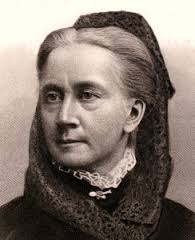Milicent Washburn Shinn was born April 15, 1858 in Niles, California. She completed a A.B. degree at the University of California. It took her six years because she periodically had to take time off to earn enough money to continue.
In 1880 Milicent began to contribute prose and poetry to The Californian. In 1883 she acquired the periodical and changed it’s name to Overland Monthly and was it’s editor for the next eleven years. In 1894 she sold the successful paper and gave up her editorship. She continued to submit her essays and poems though.
When her niece was born in 1890 she became very interested in child development. She kept precise records of the baby’s mental and physical progress which she published as Notes on the Development of a Child. As a result she was invited to speak at the world’s Columbian Exposition in Chicago in 1893. She was quite surprised at the attention her work received. She had done the research for her own edification and enjoyment, not with any scientific aspirations. She was astonished to learn that such records were not common. As a result of her presentation Shinn received several invitations for graduate study at prestigious institutions such as Stanford, John Hopkins and Clark University. Milicent chose to return to her alma mater, the University of California to earn her Ph.D. She was the first woman and only the eleventh person to receive a Ph.D. from the school.
Her work in psychology was very well received and brought her attention in both the United States and abroad. Her second book, The Biography of a Baby, was published in 1900. Shortly afterwards she retired to the family ranch in Niles where she lived quietly doing charity and church work. She was also active in her college alumnae association.









